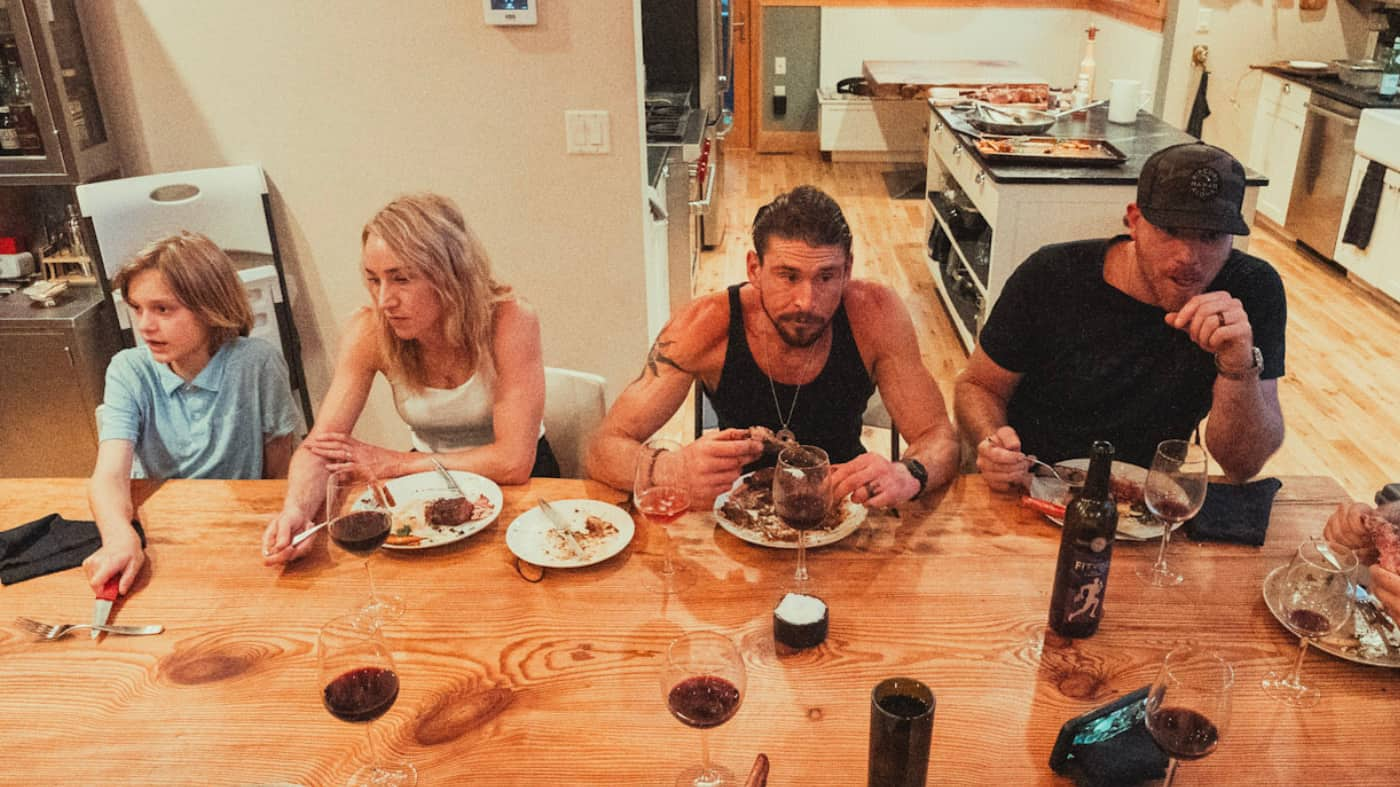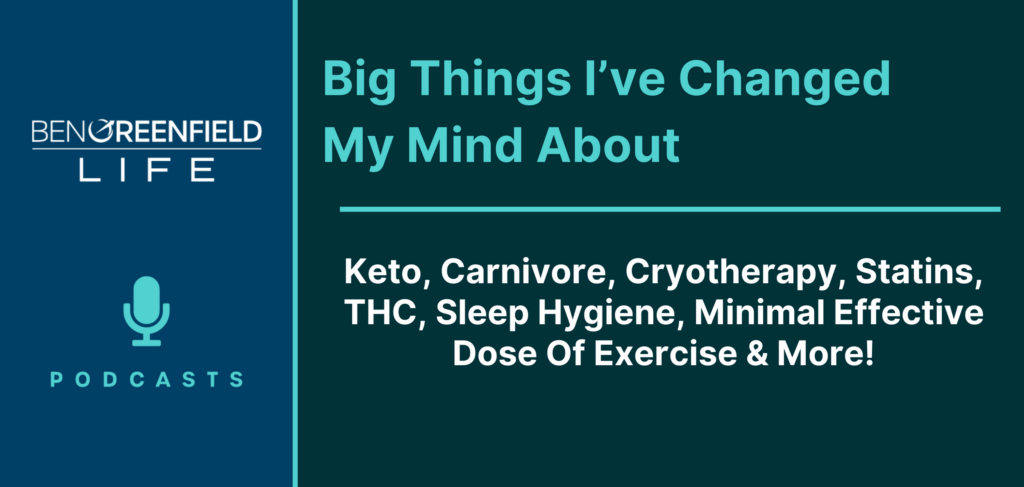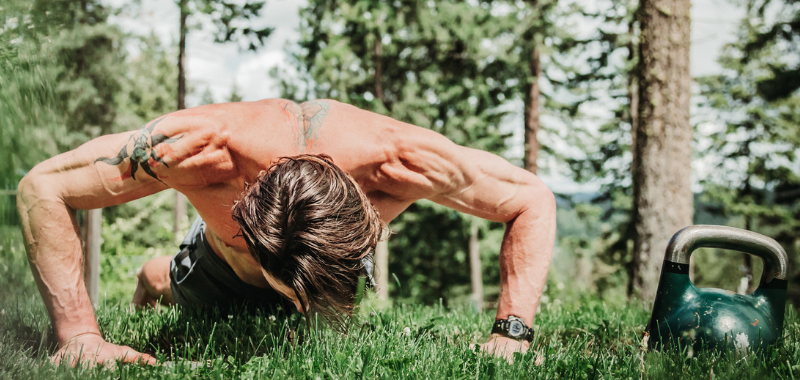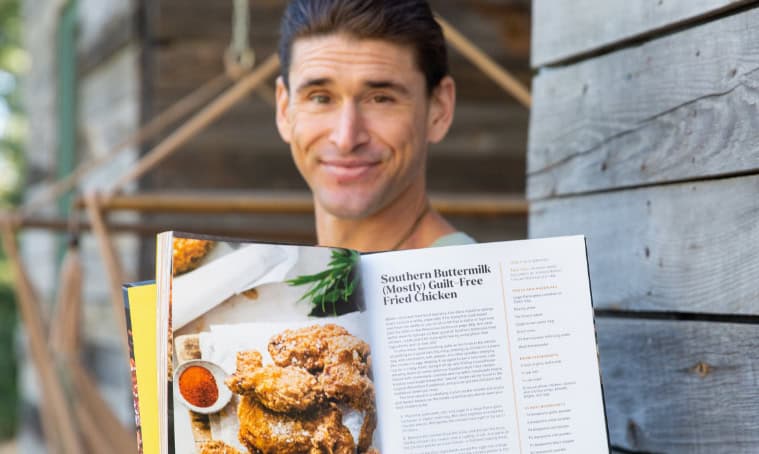September 20, 2022
I read on average three to five books a week, spend most mornings immersed in health and fitness research and journals, have had for the past 20 years long-form podcast conversations (I'm so blessed by this!) twice a week for up to 90 minutes with wellness, longevity, and nutrition experts, and try out nearly every biohack, fitness tool, and supplement on the face of the planet.
This process of deep, involved immersion in research and self-experimentation has granted me a wealth of insight into what works and what doesn't.
What may be the most popular topic I'm asked about regularly—the topic about which people most want to know what I've learned—is (newsflash!) diet. This is for good reason, considering the recommendations out there for what to eat for weight loss and general health seem to change constantly, and even at a given time can be radically different depending on the information source.
For example:
Is fat bad?
What about coffee, soy, meat, and gluten?
Should you be counting calories?
What about fasting?
No wonder many folks feel confused and overwhelmed about what to eat on a typical day.
While I don't claim to have this entirely figured out, I have definitely gained a great deal of knowledge over the years, both from research and from playing around with my diet, about what foods help me function optimally. Since I love to eat, and I feel strongly about food as a pathway to connection to family and friends, I also take taste and presentation into account. I'm not going to sit at the dinner table with a smoothie while my family feasts on a lovingly-prepared meal, and I'm also not going to force my guests to eat organ meats if that's not their thing. The end result for me has been what I call kind of a bastardized nose-to-tail, somewhat carnivorous diet—or more appropriately, close to how our ancestors ate, but with some modernized modifications and biohacks thrown in.
As a creature of habit, productivity, and reduced decision-making fatigue, my meals do not tend to vary greatly from day to day, but I am also not about imposing strict rules. For example, if I want to have a big ol' bowl of some kind of healthy ice cream, I have no qualms about scooping it out. That being said, I do enjoy making treats like ice cream more nutritious. In my Boundless Cookbook, for instance, I have three delicious ice cream recipes that include health-optimizing ingredients such as collagen powder, bone broth, colostrum, and more. Why not have your cake (or ice cream) and eat it too, right?
Anyways, since I am so often asked what I eat on a typical day, I wanted to give you a rundown of what I'm doing now. I also recorded a video in which I take you along with me to eat and drink from wake-up to dinner. You can watch that here. I do want to make two important points, though, before you get down to reading and watching:
- Try not to get overwhelmed by the number of foods, ingredients, and supplements I consume daily. I've spent years trying things out, substituting this for that, etc. You don't need to run out and get everything that I talk about in this article. That would not only result in a significant financial dent, but your body would probably not react favorably to an onslaught of unfamiliar input. Instead, I recommend that you try two or three things that you find most interesting and build from there.
- Each of the products (foods, ingredients, and supplements) that are part of my daily diet is in there for good reason. If I went deep into the nitty-gritty science and health benefits of every single one of those, though, this article could be a hundred pages long. Instead, I suggest searching my website with the name of whatever it is you want more information on to find what I've already written and podcasted.
OK, let's eat!
Early Morning
There are certain practices that I rely on to start my day feeling my best spiritually, emotionally, and physically.
Those morning routines include praying, journaling, stretching, pooping (sorry, but it's important), and more. Here's a link to a recent Twitter “AMA” (Ask Me Anything) in which I give a brief glimpse into all elements of my morning routine, but of course, for the purposes of this article, I'll focus on nutrition and diet.
First and foremost on that list I posted to Twitter last week is my morning hydration. Each morning starts with a giant 32 ounce-ish mason glass jar of water dressed up with Hydrogen tablets, Quinton minerals, and Adrenal Cocktail, which is kind of like a whole foods vitamin C and minerals cocktail. I also add baking soda, and sometimes, especially during the summer when I’m sweating more, and these tasty little packets of electrolytes called Protekt. When I take my water, I also take my morning supplements. You can read my entire supplement protocol here. (Quick note: Many of the companies who make the products I mention in this article have generously offered discounts to my readers. At the end of this article, you can find a resource list with discount codes if they apply.)
Later in the morning, around an hour or so after I wake, I have a hot beverage. Three or four mornings a week, I simply have a piping hot mug of black Kion coffee. Once a month, I switch to decaf coffee, then I go back to regular, and then to decaf again. Why? While there are more than 1,000 natural compounds in coffee, three, in particular, stand out in terms of their ability to provide significant health benefits: caffeine, antioxidants, and diterpenes. Caffeine blocks adenosine receptors in the brain, keeping adenosine from attaching to them, which results in higher perceived energy levels, mental alertness, and enhanced mood. Caffeine's health benefits go beyond wakefulness, though, and may include fat burning, improved post-exercise recovery, help with atrial fibrillation, and more. While coffee contains many different antioxidant compounds, the two classes that are most studied are hydroxycinnamic acids and phenolic acids, which include potent bioactive polyphenols such as chlorogenic acid (CGA) and caffeic acid. The CGA in coffee has shown promising health benefits, including positive effects on blood pressure, blood sugar levels, and even weight, BMI, and body fat percentage. Caffeic acid may increase athletic performance and have anti-aging effects on the skin (it’s used in many skincare products for this reason). Diterpenes, which include cafestol and kahweol, are fatty acids that are responsible for many health-promoting mechanisms in the body, including down-regulating inflammation mediators, increasing glutathione (GSH), and potentially fighting cancer.
Want more on coffee? In my recent article, “Get To Know Your Joe: The Latest, Groundbreaking (Pun Intended) News & Research On The Health Effects Of Coffee.“, I talk more in-depth about the benefits of coffee, ways to brew your morning joe, and (healthy) flavor add-ins.
When I'm not drinking coffee, I have several other morning beverages for starting my day. For example, I'll often blend chaga, cordyceps, ten mushroom blend, and lion’s mane mushrooms from Four Sigmatic. This coffee alternative gives me the focus I need for early morning work and podcast production without the coffee. Occasionally, I'll have loose-leaf tea. My favorite tea is from a place called Kauai Farmacy. If I feel like chocolate, I'll rotate in dried cacao shells and cacao nibs from a company called MiCacao. Lately, I've also been trying a brew called RASA, a delicious, healthy coffee substitute made from adaptogenic herbs, and occasionally will add a couple of scoops of kratom, if I have a tough workout coming up or need an extra surge of energy, and the way I do this is to simply add the kratom to any of the coffee or tea I'd be drinking anyways. Though I rarely ever use caloric sweeteners, I will often add a touch of Omica Organics vanilla or butterscotch toffee-flavored stevia to any of my hot blends, along with a pinch of good salt.
Breakfast
Between my fitness routine, work, and my family obligations, my day also requires plenty of energy, so, for reasons described in my recent podcast Q&A on my “high energy flux lifestyle,” I rarely skip breakfast, although I do fast for 12-16 hours intermittently every day (e.g., quit eating at 8 pm and have breakfast at 10 am).
So while I do love my coffees and teas, I also need actual caloric energy to sustain me throughout the day. That's why I pack my breakfast full of high-quality, nutritious foods.
My morning workout happens around 8 or 9 am daily. Occasionally, I'll throw back a bottle of Feel Free – a combination of kratom and kava before my workout for an energy boost, although I also sometimes save that shot for the afternoon. Other times, I'll have Feel Free after my workout, around 10:30 am. It just kind of depends on how I’m feeling.
By 10 a.-ish, I will have already worked and meditated and exercised and caught up on a bunch of other to-do's for about five hours (after getting up at 5 am), worked out with high-intensity intervals for about 40 minutes (or on an easier day, gone for a walk in the sunshine or done an infrared sauna session), had a little cold plunge, and then it’s finally time for my smoothie.
Nine times out of ten, unless I’m taking my kids out to breakfast, I just have that big ol' smoothie. The recipe varies somewhat throughout the year. Right now, it's summer, and in the summer, the body tends to do better with carbs. My typical smoothie this time of year is wild organic blueberries for carbs, frozen raw liver bites, a giant heaping scoop of Kion Creatine, a scoop of Kion Colostrum and a scoop of Kion Clean Vanilla Protein. This is like having blueberry-vanilla ice cream for breakfast (if you blend it thick enough), the Kion Clean Protein Vanilla tastes perfect with the blueberries—and you don’t even taste the liver, honestly. I also add a pinch of Ceylon cinnamon, a pinch of this really, really good Mexican Colima salt, and then even though the vanilla protein is naturally sweet, I usually add a touch of Vanilla Organic Liquid Stevia. Then, most of the time, I'll put in a handful of enzymes (BiOptimizers MassZymes) because they help me to assimilate the protein. I blend it all up, then I'll typically toss in some refrigerated bee pollen, chunks of a Kion Energy Bar or Keto Brick, and/or crunchy coconut flakes or cacao nibs. Finally, I’ll often break up a Keto Brick to add crunch on top.
Another favorite smoothie recipe of mine is my popular anti-aging smoothie, but it's a bit more involved. This blend tastes like a big bowl of ice cream, yet it's packed with nutritious ingredients (you can find them here). A lot of my aging clients (e.g., those over 50) drink this for breakfast every morning and swear by the “longevity” effects they feel. In the video below, I take you through my anti-aging smoothie-making routine, and while it may seem like a decent amount of effort, I promise you that the results are worth it.
Along with my morning smoothie, I’ll typically take probiotics. Right now, my favorites are from Seed Probiotics, and I take three capsules daily.
Lunch
Lunchtime, which happens around 2 pm daily, is also important for me.
While I don't eat a ton, what I eat at lunch is important for keeping my energy up during the day.
Generally, there’s a big pile of leftover grass-fed, grass-finished beef or wild-caught salmon or pastured pork or chicken or even organ meats from dinner the night before, which will serve as the protein base of my lunch. Believe it or not, I don’t eat many raw vegetables. Instead, I stock up on vegetable powder. Why? Well, it's easier on my gut to have meat and vegetable powders rather than meat and big salads and raw vegetables. So, I sprinkle some of the Kauai Farmacy powders on my meat, along with Dr. Thomas Cowan's podwers, and also tend to use generous amounts of Primal Kitchen condiments.
I also like to have baby food with lunch. (No, I’m not kidding.) Serenity Kids Baby Foods is made from organic vegetables, herbs, and nice oils. If you need more convincing to incorporate baby food into your adult diet, I encourage you to read this article and listen to this podcast of mine with the founders of Serenity Kids, Joe and Serenity Carr. I literally pour the baby food on my meat like a sauce, then I put Primal Kitchen Mustard or Ketchup on there, too. For filler, I like sea moss gel. I’ll also occasionally do a chia seed slurry or pumpkin puree to accompany the meat. All of these are examples of nutrient-dense, low-calorie “fillers” that go well with nose-to-tail proteins and vegetable powders. Sea moss gel and pumpkin puree are pantry staples of mine because they work as part of what I call “volume” eating, a strategy for which the actual amount of space the food takes up on your plate is not necessarily the same as the number of actual *calories* in that food. While, in general, I don't count calories or advocate that you do, either, I do like to both eat and feel full, and there are many nutrient-dense options that you can add to your plate without adding calories. You can find a list of 20 such foods that I rely on for this purpose, with specific information about how I incorporate those into my diet, in this recent article. They are also foods that appear frequently in my Boundless cookbook as part of my favorite recipes.
In the freezer, I keep water nice and cool with a few scoops Organifi Green Juice, so I always have green juice as an option with lunch. I also keep bone broth handy in the fridge. With lunch, I may have the adaptogenic herb reishi for relaxation, and will usually add it to the bone broth, along with an extra helping of vegetable powders. Finally, I like to make apple cider vinegar gummies. They're expensive if you buy them, but they’re so cheap and easy to make with gelatin and apple cider vinegar. I have a couple with a meal to help stabilize my blood sugar and satiate my appetite.
As for afternoon drinks, it's beer all day long. Kidding! I have two favorite drinks that I enjoy in the afternoon (and all day, really, between meals). The first is Pellegrino. I'm a huge fan of good mineral-rich soda water and sometimes add organic stevia to it, or electrolytes. The other is Zevia, a kind of natural stevia-flavored soda.
Dinner
After a long day, I look forward to dinner with my family, which is always a glorious end-of-day party.
Our family celebrates the day’s end by gathering in the kitchen to prepare a meal together, sing, pray, discuss what we read in our devotionals earlier that day, and, finally, sit down to feast.
Most days, we eat beef, fish, chicken, pork, and/or organ meats for dinner. One favorite of mine is roast chicken prepared on the Traeger grill. After rubbing the chicken with olive oil, I grill the spatchcocked (butterflied) chicken. Or, let's say you don't like chicken or don't have a fancy Traeger grill. Here's another example of a very simple go-to meal that is incredibly nutrient-dense and simple to make. All you need to do is take several filets of wild-caught salmon (I get mine sashimi-grade from the clean fish source “Seatopia,” which is kind of like the ButcherBox of seafood) and lay them skin-side down on a baking dish. Generously drizzle them with extra-virgin olive oil or any other heat-stable oil of your choice, add a few simple spices (my favorites are salt, pepper, dill, and if you have it, the vegetable powder from Dr. Thomas Cowan), and then slide the dish into the oven. Broil for four minutes skin-side down, open the oven, flip them around and broil for another three minutes or so until the skin gets nice and crispy. The perfect side for this one is a heap of any good mushrooms you can find, either wild or from the grocery store. You can drizzle them with olive oil and spices as well, then simply bake for 25-30 minutes at 400 degrees right before you put the salmon in. If you need a few extra carbohydrates with this meal, wild blueberries are a great fit. Fish, mushrooms, and berries go great together, and this is another meal that pairs quite well with a nice organic red wine.
I'll also add sides to the meal, which may be fresh mushrooms that I’ve harvested from the backyard with some sea salt and olive oil, carrot fries I cook in the air fryer, or some other in-season root vegetable, like parsnips, beets, sweet potatoes, cucumber, zucchini, etc. As I mentioned earlier, I don't eat many raw vegetables, but with dinner, I often have a small salad, such as sprouts and arugula with goat cheese, basil, and fresh tomatoes. Typically, I top everything off with Primal Kitchen goodness in the form of mustard, ketchup, BBQ sauce, etc. Dinner is about the only meal I have a significant portion of carbs with (besides some low-sugar berries in my morning smoothie), typically coming from root vegetables, a touch of organic wine (e.g., Dry Farm Wines), a little bit of dark chocolate with organic berries, healthy ice cream, a few slices of my wife's homemade sourdough bread, etc.
Most often, if I have a drink with dinner, it's organic wine. If I'm in the mood for a cocktail, I'll go back and forth between Hard Ketones, which is an ethanol-free drink that has a similar effect as alcohol, and a Moscow mule with electrolytes and ice.
As far as evening supplements go, you can check out my article on that here.
There you go! Again, there is certainly variation from day to day, this is a pretty typical representation of what I eat.
However, you should know that what I eat may not be right for you.
While there are certain dietary best practices, such as incorporating fasting, eating seasonally, and avoiding GMOs, there is just not a single “perfect diet.” If you don't know where to start, I recommend reading through the four basic meal plans that I lay out in this article. I even give specific recipes for each meal of each of the plans. If you're just starting to look at which foods fit your lifestyle and your body, be patient as you sort it through. The most effective way to figure it out is trial and error; your body will let you know if a food does not agree with you.
So, here's a super-quick summary of what I eat during the day:
- Breakfast: 99% of the time, some kind of superfood smoothie.
- Lunch: Dinner the night before, dressed up with some extra goodies like vegetable powder and bone broth.
- Dinner: Some type of healthy, clean protein source, nose-to-tail along with a carbohydrate such as root vegetables and plenty of healthy fats and oils.
Even if you read this and thought, Nope, that's not how I want to eat, I hope this rundown gave you a few new ideas that you can incorporate into your meal plan.
Finally, for a full list of my recipes and ingredients, you should grab my Boundless Cookbook. It's a perfect, true-to-life, tasty example of how I combine “ancient” ingredients such as, say, liver and Himalayan Tartary Buckwheat with modern ingredients like gelatin, amino acids, superfood rubs, etc. for a unique combination of biohacking and traditional, tasty, healthy cooking. You'll love it.
Now, I want to know what you think about how I eat! I'd also like to hear more about what's working and not working for you with your diet. Leave your comments, questions, and thoughts below. I read them all!
Resources:
- Hydrogen Tablets (use code GREENFIELD to save 10%)
- Quinton (use code GREENFIELD to save 10%)
- Adrenal Cocktail (use code GREENFIELD10 to save $10)
- Baking Soda
- Protekt (use code BEN to save 15%)
- Kion Coffee
- Kion Decaf Coffee
- Four Sigmatic (use code BENGREENFIELD to save 15%)
- Kauai Farmacy (use code GREENFIELD15 to save 15%)
- MiCacao (use code BEN to save 10%)
- Omica Organics (use code GREENFIELD to save 10%)
- Feel Free (use code BEN40 to save 40%)
- RASA Adaptogenic Coffee Alternative
- Wild Organic Blueberries
- Kion Creatine
- Kion Colostrum
- Kion Clean Vanilla Protein
- Ceylon Cinnamon
- Colima Salt
- BiOptimizers MassZymes
- Kion Energy Bar
- Keto Brick
- Cacao Nibs
- Seed Probiotics
- US Wellness Meats (use code BEN to save 15%)
- Dr. Thomas Cowan's Vegetable Powders (use code BEN to save 15% on all vegetable powders)
- Primal Kitchen
- Serenity Kids Baby Foods (use code BEN to save 15% off your first order)
- Sea Moss Gel
- Chia Seed Slurry
- Pumpkin Puree
- Organifi Green Juice
- Kettle and Fire Bone Broth
- Pellegrino
- Fresh Pressed Olive Oil
- Seatopia (use code GREENFIELD20 to save $20)
- ButcherBox
- Hard Ketones
- Himalayan Tartary Buckwheat














Thank you for your article! I heard of you years ago but really started digging in after your article with And Sons magazine. Thank you for your interview there as well! As someone who has struggled finding the right foods for gut acceptance while being active this helps me release my need for carbs too often.
I think Ben you should talk more to healthier options instead of starch based carbs. For example, sweet potatoes and yams, buckwheat, which is a seed not a grain and wild rice, which may be the best rice out there. Eating some carbs for me at lunch keeps my energy sustain way more into dinner. Two meals a day and a smoothie like yourself is where its at for sure.
Ive done the food sensitivity test and the blood tests and the 5 week detox course off of processed foods with a dieticians instruction and have pretty narrowed it down to what works and what I like. But I think it is great for others as well to know the things that have worked for me. Keep up the great work and alway cook w bone broth or water except some coconut oil for waffles or pancakes.
I’m currently reading Beyond Fitness and Endurance, thank you for all you are doing!
It seems your whole schtick has morphed into a huge blob of affiliate links and options for paying customers who have a virtually limitless income in which to purchase said foods and supplements with little to no research to back up claims, save for your own endoresement.
Camel Milk comes to mind.
Gotta say I’m a bit baffled by your quote “aging clients (e.g., those over 50) drink this for breakfast every morning and swear by the “longevity” effects they feel.”
As I would love to know how to “feel longevity.”
In short, I’ve given up on your advice + opinions and will look elsewhere for quality information.
What is healthy ice cream?
Hey Jen, I discussed ice cream here: bengreenfieldlife.com/article/nutrition-articles/the-best-healthy-ice-creams/
Thanks for sharing, Ben!
It would be awesome if you offered healthy pate in your shop!
Most people would prefer to pay for organ meats to be premade. And the French pates and pate de campagne (chunky pate) available in the US are full of additives, sadly. I can see that the good stuff I got in the French countryside would not, as the French say, travel well. The pate de campagne is where cooks traditionally put organ meat such as heart, in addition to liver, etc.
This has zero usefulness for someone who isn’t upper middle class. A very elitist column. How about tips for middle or lower middle class
Well the article was what HE eats in a day, not what he would eat in a day if he was poor like you…
I’m 62., I’m a housecleaner so I’m fairly active but since having my children I have never been able to get down to A decent weight . I’m probably 35 pounds overweight. I take your shakes and amino in the morning I might add blueberries to it. And make another one for lunchtime . Along with your bar. . I drink coffee with coconut oil and collagen. Some time sip on bone broth . For dinner i usually eat meet with a salad or vegetable. I have no know health issues other than just being tired all the time. And I take great supplements. I’d be thankful for any advice.
The shakes and blueberries might be good for a relatively young guy trying to keep his bodyweight low, but a meat, fermented vegetables like kimchi, sauteed spinach, and a small baked potato is a breakfast worth trying. Swap the potato in and out, you can see if it makes a difference.
You only have two years on me!
Sally Fallon’s book with recipes, Nourishing Traditions, is really useful. I recommend it to parents all the time. You can read about her at https://nourishingtraditions.com/about/
Maybe some of the cleaning chemicals could be swapped out for healthier options. That stuff can build up over time.
My doc, Louisa Williams ND, was still taking new patients last I looked. She has a blog, so you can check her out for free.
Wishing you luck!
Does the meat need to be corn and soy free? Having a hard time finding Pork and Chicken that is raised without soy / corn feeds
Thrive has a pasture raised chicken
also imperfect foods too
Thrive and Imperfect’s both are fed soy and corn rather than true pasture raised. Only northstar bison and heritage hill farmstead are corn and soy free that I have found so far. Still hunting for more corn/soy free meats.
The most awesome affiliate link blast I’ve ever seen. One huge advertisement!